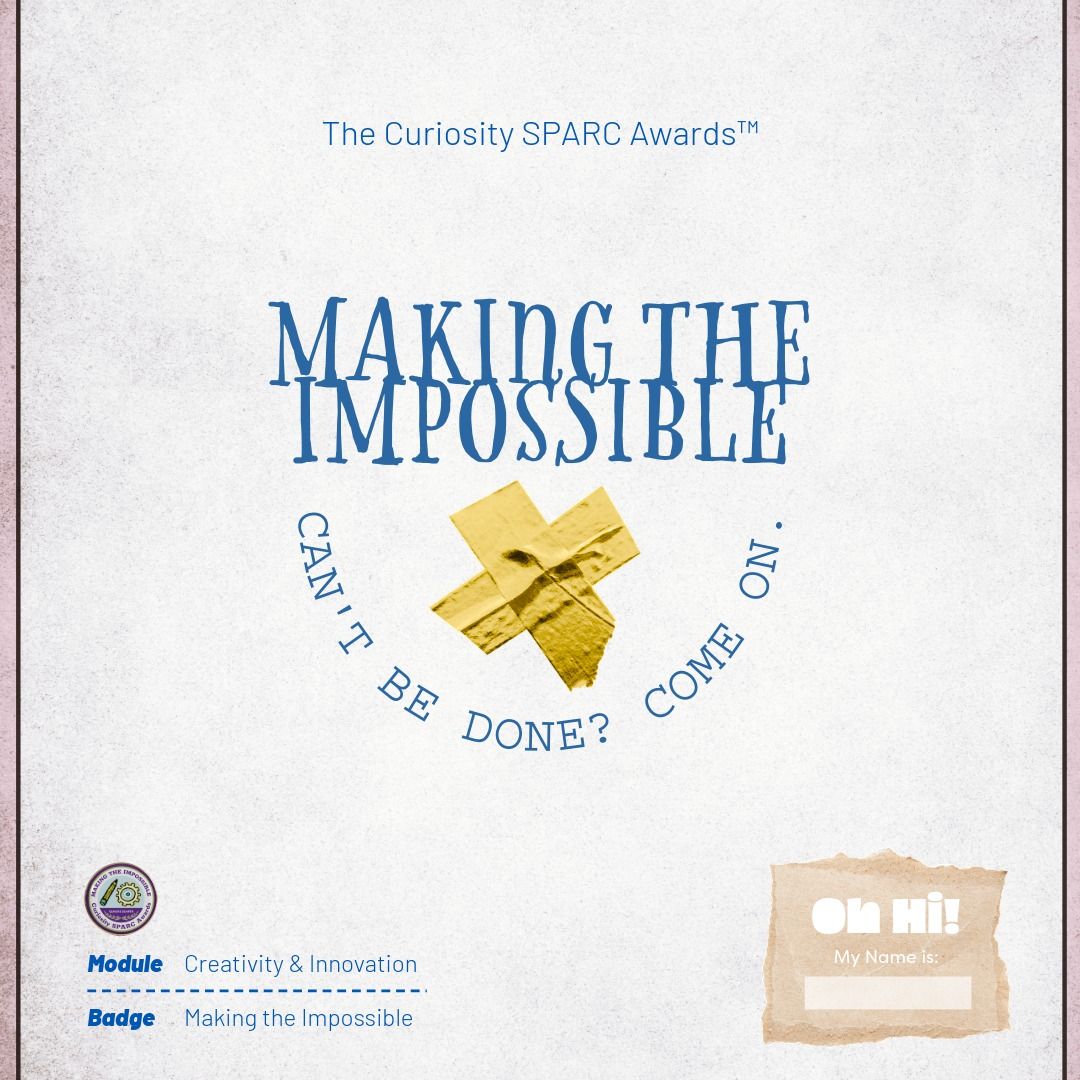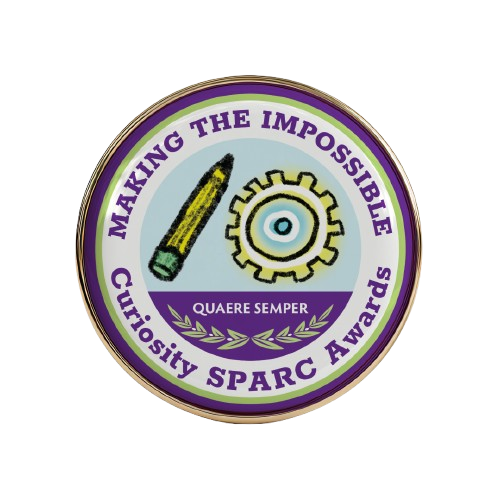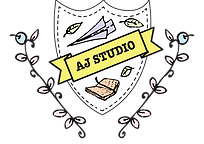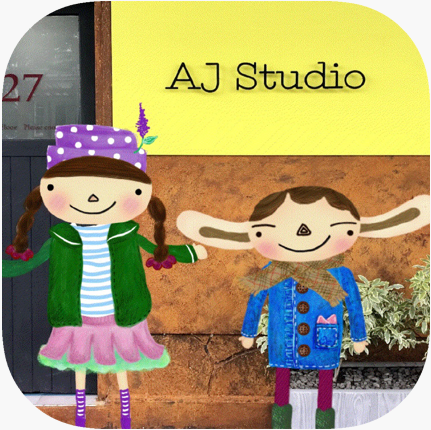If sports have their assemblies, academics have their prize-givings, and musical talents have their concerts
how do we celebrate the innovators, the artists, designers, and makers?
Curiosity SPARC Awards™
When was the last time you thought about edible cutlery, flying cars, or chocolate that changes colours? Just because you are older now, it doesn't mean you should stop making the impossible! Every impossible idea begins with curiosity, but curiosity only matters if we give it time and attention.
This badge challenge is all about turning fascination into action. It is designed for ages 12–14, but welcomes all ages and skill levels to give it a go! Try researching, imagining, drawing and experimenting, to transform wild ideas into creations that feel not only tangible but also hopeful.
The Design the Impossible badge is for students who want to lead, create and take action. It celebrates the kind of daring imagination that asks "What if?" and then sets out to make it real.
This badge challenge is all about turning fascination into action. It is designed for ages 12–14, but welcomes all ages and skill levels to give it a go! Try researching, imagining, drawing and experimenting, to transform wild ideas into creations that feel not only tangible but also hopeful.
The Design the Impossible badge is for students who want to lead, create and take action. It celebrates the kind of daring imagination that asks "What if?" and then sets out to make it real.
- Sparking curiosity through research and discovery
- Turning impossible ideas into sketches and prototypes.
- Experimenting with colour, shape, and surreal design.
- Building confidence to lead and share bold ideas.
Flexible completion: most families finish within 2–4 weeks, at their own pace.


The Curiosity SPARC Awards™ are a creative badge system for children aged 5–14. SPARC™ stands for Solve Problems And Reflect Creatively. Each badge celebrates curiosity, resilience, and original thinking in art, design, and beyond.
Any child aged 5–14 can work toward a SPARC badge, whether they attend AJ Studio classes, take part in school partnerships, or join one of our holiday programmes.
Each badge has a set of creative challenges. Students complete the activities, reflect on their process, and share their work with a tutor or mentor. Once complete, they are awarded a badge to mark their achievement.
Yes. Badges are grouped by developmental stages: Years 1–3, Years 4–6, Years 7–10, Years 11–13.
Yes. While we recommend starting with the age-appropriate level, students are welcome to challenge themselves with badges from older groups or revisit younger ones if it sparks their interest. The focus is on curiosity and growth, not restriction.
Not at all. While many badges use art and design as the starting point, the awards also cover invention, storytelling, technology, nature, and social impact. The goal is to celebrate creativity in all its forms.
Some badges can be completed in just a few days, especially through our workshops or holiday programmes. Others may take a few weeks or longer. There is no time limit, and students are free to move at their own pace.
Reflection looks different for every age. Younger children might draw, record a voice note, or talk with a tutor. Older students may prefer to write, create a short video, or share a portfolio. The important part is thinking about what was learned and how challenges were overcome.
They receive a physical badge, along with recognition of their effort and growth. Earning badges also contributes to milestone achievements (for example, completing 7 badges is celebrated with a special award).
Yes. There’s no limit to the number of badges a child can earn. Each badge highlights a different area of creativity, so children can build a unique portfolio of achievements.
Assessment is based on effort, creativity, and reflection, not perfection. Tutors look for original ideas, persistence through challenges, and the ability to talk about what was learned along the way.
Yes. The badges are designed to align with curriculum goals such as creative thinking, problem solving, and communication. Teachers can integrate badges into class projects, extension programmes, or enrichment opportunities.
Unlike traditional tests or certificates, SPARC badges™ celebrate the messy, playful, and experimental side of learning. They encourage children to take risks, make mistakes, and discover their own voice.
Write your awesome label here.
Thank you!
Get updates on new workshops, events and news in your mailbox.

